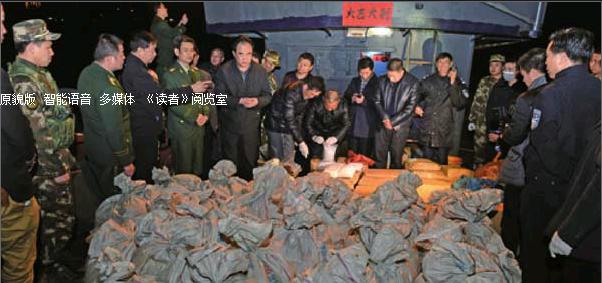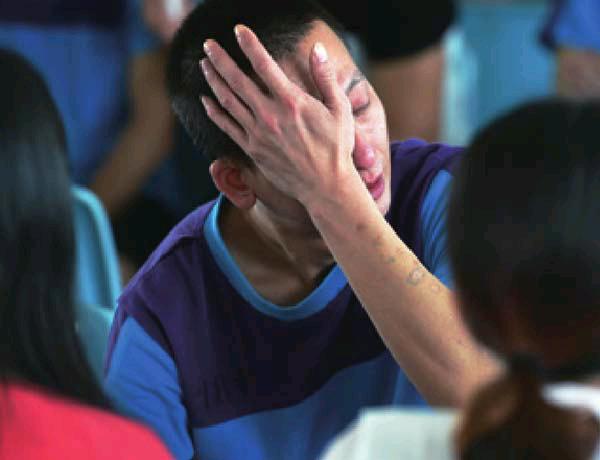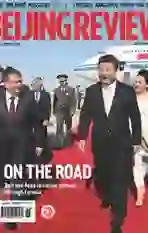Battling a Hydra
2016-07-12ByYinPumin
By+Yin+Pumin


AIDS, terrorism and the illegal drug trade are some of the biggest threats facing the world. China today faces more challenges in combating drug-related crimes, due to the spurt in the number of drug abusers, products as well as routes.
“Influenced by both domestic and international factors, drug-related problems have spread rapidly, involving more people and sectors,” Tao Jing, Vice Director of the Beijing Municipal Public Security Bureau (BMPSB), told a press conference in Beijing on June 21, ahead of the International Day Against Drug Abuse and Illicit Trafficking, which fell on June 26. “With the involvement of more youths, our task has become tougher and more urgent. It needs cooperation between different departments, regions, social groups and countries.”
A complex scenario
According to a report by the National Narcotics Control Commission (NNCC) in February, China had 2.34 million registered drug users by the end of 2015. Police confiscated 102.5 tons of narcotics in 2015, a 48.7-percent increase year on year. More than 165,000 drug-related crimes were solved and 194,000 people arrested. Nearly 80 percent of these suspects were from rural areas and did not have stable jobs.
A startling find was that drug users now include public-institution employees, Liu Yuejin, Deputy Commissioner of the NNCC, said.
In April 2015, Gong Weiguo, former Mayor of Linxiang City in central Chinas Hunan Province, and Liu Qunlin, former Chief Procurator of Linxiang Procuratorate, were disciplined for using illicit drugs. In September 2015 alone, 18 officials in Hengyang County, also in Hunan, were disciplined for drug abuse.
The disciplinary measures came after the county came up with a regulation on drug abuse by public servants in January 2015. The regulation said any Party member or public servant caught abusing drugs would be disciplined. Those found using more than two types of drugs would be sacked.
Since then, 39 officials have been caught using illicit drugs, local media reported.
To address this special problem, the Supreme Peoples Court (SPC) of China issued a judicial interpretation in April 2016, saying public-institution employees committing drug-related crimes would face tougher penalties than the public.
“The criteria for conviction in drug-related crimes committed by public-institution employees shall be half the general criteria,”the interpretation read.
Explaining it, Fang Wenjun, an SPC judge, said public-institution employees have the responsibility of being role models in combating drug-related crimes. “If they themselves were to commit such crimes, it would cause a more adverse impact on society,” Fang said.
The number of young people abusing drugs also rose last year. The NNCC report said 60.6 percent of the registered drug users were between 18 and 35, while 1.8 percent were under the age of 18.
In Beijing, 62 percent of the new drug users registered last year were under 35, according to Tao. The youngest was just 12.
“One way to prevent young people from using drugs is education,” Tao said, suggesting the education could be imparted through interesting events such as exhibitions, contests and even opera performances.
“Social media tools like Weibo and WeChat are also being used to disseminate anti-drug knowledge, especially among youngsters,” he added.
Synthetic drugs are becoming more popular among young drug addicts. These are chemically laced substances sold over the counter at many places. What makes synthetic drugs extremely dangerous is that neither the buyer nor the seller knows exactly what chemicals and how much of them the drugs contain.
According to the BMPSB, 22,000 out of the 33,000 registered drug users in Beijing took synthetic drugs. Tao said synthetic drug users accounted for the 12.3-percent annual increase in the number of Beijings registered drug abusers.
Nationwide, 80.5 percent of the 531,000 new registered drug users last year were synthetic drug addicts, according to Liu.
To tackle the problem, the April judicial interpretation indicates more stringent measures for synthetic drug abuse, especially ketamine, known as “K powder.” It has redefined 500 grams of K powder as a “large amount,” saying people who smuggle, transport, purchase, make or illegally possess that quantity will be sentenced to a minimum of 15 years in prison.
Previously, offenders faced that prison term when the amount of the drug involved was 1 kg.
K powder abuse in China has been escalating with the number of its users, ranking third after methamphetamine and heroin abusers. This has resulted in more violent cases under the influence of the drug, Fang said, underscoring that it was urgent to control the spread of the drug.
However, the greater inflow of drugs from abroad and growing multi-channeled transportation are posing challenges for police.
“Drugs are being transported by road, railway, plane and express mail,” Tao said. According to him, in the first five months this year, Beijing Police arrested more than 850 drug mules and confiscated 3.2 kg of drugs at security checkposts alone.
In Lufeng in south Chinas Guangdong Province, 2 tons of methamphetamine, known as “ice,” were seized from a ship in February.
“It showed that trafficking by sea is more rampant than by land. Ships can carry much larger consignments,” Lin Chunjia, Vice Director of the Political and Legal Affairs Commission of the Communist Party of China, Lufeng City Committee, told Xinhua News Agency.
According to the NNCC report, about 90 percent of the heroin and ice tablets seized in 2015 came from the “Golden Triangle,” one of Asias two most prolific opium-producing areas comprising Myanmar, Laos and Thailand.
“To control cross-border drug smuggling, international cooperation is needed,” Liu said.
International cooperation
China lies next to the Golden Triangle as well as the Golden Crescent, the other most extensive illicit opium-producing area comprising Afghanistan, Iran and Pakistan. The proximity has made China a major transit and destination country for drugs.
The area between southwest Chinas Yunnan Province and Myanmar is the second-largest route for smuggling drugs to China, according to the Ministry of Public Security. The border area between Guangxi Zhuang Autonomous Region in southwest China and Viet Nam is the second largest.
In 2015, over 1,900 foreign suspects were arrested. They came from 39 countries, including Myanmar, Viet Nam, Nigeria and Pakistan, according to the NNCC report. Liu said stricter police crackdowns and greater international communication led to many foreign suspects arrests.
At the UN General Assembly Special Session on the World Drug Problem in April, Chinese State Councilor Guo Shengkun proposed enhancing international cooperation on drug control.
China has signed 24 intra-governmental documents with more than 20 countries in recent years to strengthen drug control cooperation. It has cooperated with more than 50 countries to conduct export and import checks on precursor chemicals.
In 2015, more than 10,000 suspected drug traffickers were arrested and 100 million ice tablets seized during a two-month joint operation by China, Laos, Myanmar and Thailand. The coordinated action, aimed at curbing drug crimes in the Mekong River Region, resulted in charges for in nearly 9,000 drug crimes.
In another two-month joint anti-drug campaign by China and Viet Nam late last year, over 1,400 trafficking cases were busted, 2,000 suspects nabbed and 2,300 kg of drugs was confiscated.
The two countries agreed to strengthen judicial cooperation to combat cross-border drug trafficking.
